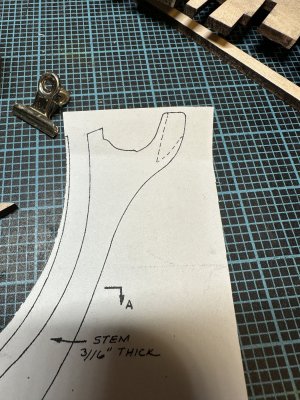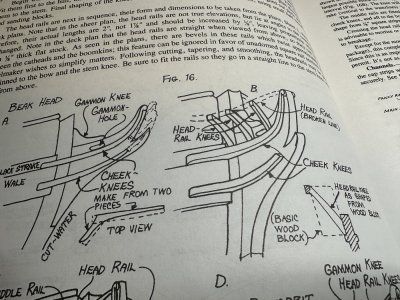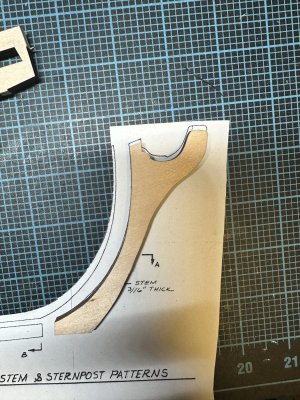Initially I did not intend to do a build log for my latest project, Model Expo’s Revolutionary War Brig Fair American, for several reasons. The first is that my skills are not developed to a point as to attract much interest. The second is that this is a pretty ubiquitous kit that has been around for quite awhile.
But before I explain why I decided to do the build log, I have to explain why I chose this as my next project. Decades ago, when I was living in the single officer dorm at Misawa Air Base, I found an ad for this kit in a magazine and, having done some of the Midwest Productions kits, I thought I would try a real ship. I got as far as attaching the bulkheads to the keel, but 1:1 life, to include acquiring a new bride put it on hold and I never got back to it. Hauled it through multiple moves over 30ish years, and eventually figured (as we prepared for yet another move) I was never going to get to it. So out it went. Fast forward to about three years ago, the local hobby shop in Newport RI was going out of business and I ended up buying several wooden ship kits, to include my recently completed St Gildas. Working on St Gildas got me to regretting having given up on Fair American years before and when Bob Hunt @lauckstreet recently had his practicum for MEFA on sale, well, it was like the fickle finger of fate thumping me in the chest. So I purchased Bob’s practicum and recently purchased my second MEFA.
So why the build log? This kit was originally released in 1978, and Bob’s practicum, as well as the kit plans and instructions, appears to be based on that kit. But as I had suspected all along, the kit I got in 2025 is different from the kit I bought in 1992. So my purpose in creating this build log is not for the entertainment or erudition of any current denizens of SoS, but to document as best I can the differences between the NOW kit and the THEN kit for those future builders of MEFA who may be interested.
Caveat emptor; the photos and labels of the kit on ME’s website and on the box are of the old kit and do not reflect the new kit. For example, the photos show a nice plastic parts organizer box that is no longer included, and the box top still says the kit includes brass cannons, even though the new release includes white metal cannons. Lucky for me, I kept all materials from the original kit but the hull and plans, although some of them have been used for spares in other builds. I have not yet done a close comparison of the cannons, so I cant yet say if one is inferior to the other, I simply highlight it ad something that has changed.
Another change that was immediately apparent is that the pre-cut and tapered dowels for the yards Have been replaced with un-dimensioned lengths of dowel. Acknowledged that the pre-tapered dowels were not quite where they needed to be, they were a time-saver.
Some changes appear to be positive, though. The keel is now a single laser-cut piece of hardwood, rather than two pieces that needed to be glued together, so no need to worry about gluing up the keel straight. The original kit included a separate piece of dimensioned lumber for the false keel, whereas the new kit has a laser cut false keel. I haven’t yet had a chance to check the length of the false keel in my kit, but in the practicum, Bob mentions the false keel in his was ~1/4” too short, which implies there must have been a version in between my 1992 kit and the 2025 kit that still had a two-piece keel but a laser-cut false keel.
What other differences will we find as we progress? Time will tell!
But before I explain why I decided to do the build log, I have to explain why I chose this as my next project. Decades ago, when I was living in the single officer dorm at Misawa Air Base, I found an ad for this kit in a magazine and, having done some of the Midwest Productions kits, I thought I would try a real ship. I got as far as attaching the bulkheads to the keel, but 1:1 life, to include acquiring a new bride put it on hold and I never got back to it. Hauled it through multiple moves over 30ish years, and eventually figured (as we prepared for yet another move) I was never going to get to it. So out it went. Fast forward to about three years ago, the local hobby shop in Newport RI was going out of business and I ended up buying several wooden ship kits, to include my recently completed St Gildas. Working on St Gildas got me to regretting having given up on Fair American years before and when Bob Hunt @lauckstreet recently had his practicum for MEFA on sale, well, it was like the fickle finger of fate thumping me in the chest. So I purchased Bob’s practicum and recently purchased my second MEFA.
So why the build log? This kit was originally released in 1978, and Bob’s practicum, as well as the kit plans and instructions, appears to be based on that kit. But as I had suspected all along, the kit I got in 2025 is different from the kit I bought in 1992. So my purpose in creating this build log is not for the entertainment or erudition of any current denizens of SoS, but to document as best I can the differences between the NOW kit and the THEN kit for those future builders of MEFA who may be interested.
Caveat emptor; the photos and labels of the kit on ME’s website and on the box are of the old kit and do not reflect the new kit. For example, the photos show a nice plastic parts organizer box that is no longer included, and the box top still says the kit includes brass cannons, even though the new release includes white metal cannons. Lucky for me, I kept all materials from the original kit but the hull and plans, although some of them have been used for spares in other builds. I have not yet done a close comparison of the cannons, so I cant yet say if one is inferior to the other, I simply highlight it ad something that has changed.
Another change that was immediately apparent is that the pre-cut and tapered dowels for the yards Have been replaced with un-dimensioned lengths of dowel. Acknowledged that the pre-tapered dowels were not quite where they needed to be, they were a time-saver.
Some changes appear to be positive, though. The keel is now a single laser-cut piece of hardwood, rather than two pieces that needed to be glued together, so no need to worry about gluing up the keel straight. The original kit included a separate piece of dimensioned lumber for the false keel, whereas the new kit has a laser cut false keel. I haven’t yet had a chance to check the length of the false keel in my kit, but in the practicum, Bob mentions the false keel in his was ~1/4” too short, which implies there must have been a version in between my 1992 kit and the 2025 kit that still had a two-piece keel but a laser-cut false keel.
What other differences will we find as we progress? Time will tell!










